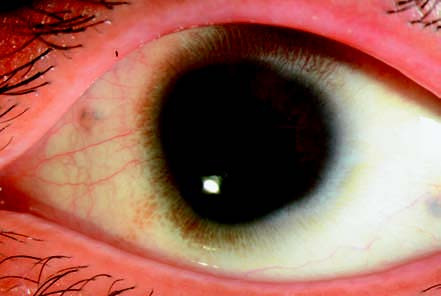Microcornea is a congenital developmental anomaly characterized by a smaller-than-normal corneal diameter. In a minority of cases, it occurs in isolation, while in most cases, it is associated with other congenital ocular abnormalities. The exact cause remains unclear, but it may be related to growth arrest during infancy or overdevelopment of the anterior rim of the optic cup, which limits the space available for corneal development. The condition can follow an autosomal dominant or recessive inheritance pattern.

Figure 1 Microcornea
It can affect one or both eyes, with no gender predilection. The corneal diameter is less than 10 mm, the cornea is flat with an increased radius of curvature, and the anterior segment is disproportionately small. Microcornea is often accompanied by congenital ocular abnormalities such as iris coloboma, choroidal coloboma, and congenital cataract, as well as systemic conditions such as muscular dystrophy, fetal alcohol syndrome, and Ehlers-Danlos syndrome. Additionally, it is commonly associated with a shallow anterior chamber, making angle-closure glaucoma more likely to occur. Among patients without angle-closure glaucoma, it has been reported that 20% may later develop open-angle glaucoma.